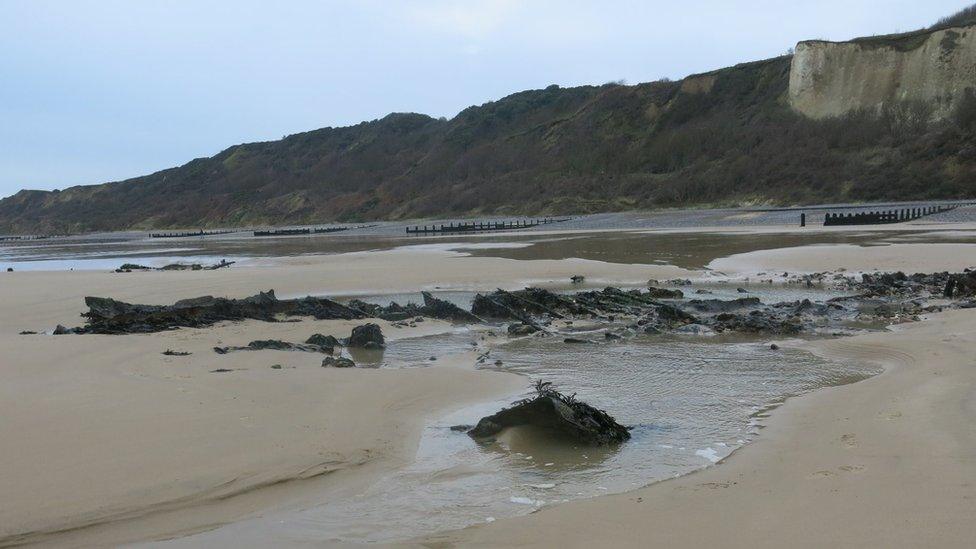Cromer low tides reveal 1917 shipwreck of SS Fernebo
- Published

The remains of the SS Fernebo have been revealed by low tides at Cromer
The rusting remains of a World War One shipwreck have been revealed by low tides on a north Norfolk beach.
The Swedish vessel SS Fernebo was broken in half by an explosion on 9 January 1917 near Cromer pier.
One man was killed by the blast, possibly caused by a mine, but the 17 other sailors were rescued by famed lifeboatman Henry Blogg and his crew.
"There are many people in the town who still don't know it's there," said Cromer museum assistant Alan Tutt.
"It's only seen at very low tides, and it's about half a mile east towards Overstrand, so it's quite a rare sight.
"I find it an evocative place because of the story behind it," he added.

Henry Blogg saved more than 800 lives in a 53-year career as a lifeboatman
Photographs of the Fernebo's remains were posted on the Cromer Museum Facebook page, along with an account of the rescue.
The 70-metre (230ft) long steamer was carrying a cargo of timber to London from Gävle in Sweden - which remained neutral throughout the war - when it ran into trouble in gales and rough seas in January 1917.
It may have been caused by a sea mine laid by a German U-boat or an explosion in the boiler room, said Mr Tutt.

The vessel was broken in two by a blast caused either by a sea mine or a boiler explosion
When it broke apart, one half of the boat drifted with six crew on board towards shore, where the crowd of onlookers that had formed made a human chain to rescue them.
The 11 men on the other half were saved by Mr Blogg and his crew, who battled through rough seas in their rowing boat, the Louisa Heartwell, to reach them.
They each received medals from the RNLI for their efforts during the 14-hour rescue.
The sailor who died in the explosion, engineer Johan Adolf Anderson, washed up east at Mundesley, where he is buried.
The museum in Cromer is named after Mr Blogg, who served for 53 years on the town's lifeboats, saving 873 lives in the North Sea, external.

The wreck is around half a mile east of Cromer pier
- Published30 December 2018

- Published23 September 2018
